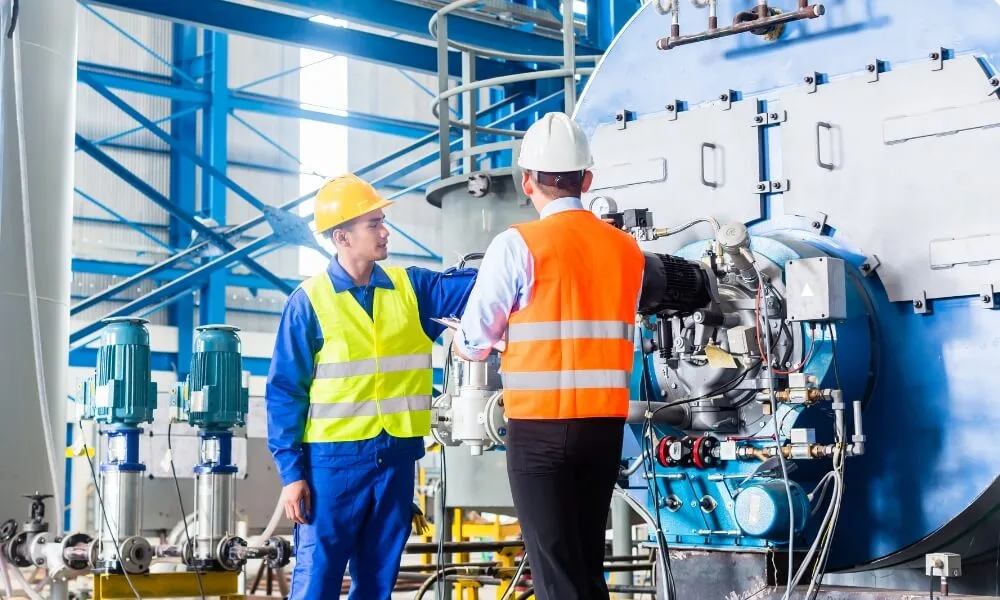Understanding the crucial role of safety in any workplace is the first step toward creating a harmonious, productive, and safe environment. This blog post explores an innovative framework known as the “Five Stars” Safety Supervision Model, designed to enhance safety conditions and practices in various industries. The model outlines key strategies for identifying and mitigating potential hazards, fostering a safety culture, and establishing the basis for sound safety leadership. Join us as we unpack the five core principles of this model, detailing how each contributes to cultivating a safer, healthier, and more productive workplace.
Safety supervision involves assessing and monitoring workplace safety conditions and practices to identify and correct potential hazards. It is typically conducted by safety professionals or safety committees within organizations. Safety supervision activities may include inspections of work areas and equipment, interviews with employees, and review of safety records. Safety supervision ensures that workplaces are safe and employees follow proper safety procedures.
Key 5 Stars Of Safety Supervision And Leadership
Understanding the importance of safety supervision in the workplace, and the principles of effective leadership within this context, is crucial to establishing a safe work environment. Safety supervision revolves around ensuring employees adhere to established safety practices and procedures and that the work environment is devoid of potential hazards. The “Five Stars” Safety Supervision model lays out five core elements that play a significant role in achieving these goals.
1. Supervision
Supervision is overseeing workplace activities to confirm adherence to safety practices. The process of supervision plays a vital role in employee safety. When supervisors keep a keen eye on the activities and processes in the workplace, they can identify and prevent potential hazards. They can ensure workers adhere to established safety protocols and avoid engaging in dangerous behaviors. A supervisor’s active presence can act as a deterrent to unsafe conduct. It’s important that this oversight is proactive to prevent incidents before they happen.
2. Training
Training is the act of imparting knowledge about safety procedures and the use of equipment. Proper training in workplace safety is indispensable. Employees should not only be taught how to safely execute their job responsibilities but also how to handle equipment correctly and safely. They should be trained to identify potential risks in their environment. Furthermore, training should be updated regularly to accommodate any changes in safety guidelines or procedures. Well-informed employees are less likely to commit errors leading to accidents or injuries.
3. Accountability
Accountability involves enforcing adherence to the organization’s safety rules. Holding everyone responsible for their safety actions in the workplace helps maintain a high safety standard. Employees and supervisors alike should be aware that safety policies are non-negotiable and that breaching them will have consequences. Regular safety audits can also be conducted to spot weak areas and take corrective measures. This principle highlights the role each individual plays in maintaining a safe environment.
4. Resources
Resources involve equipping employees with the necessary tools, equipment, and materials to perform their tasks safely. Providing employees with the necessary resources, including personal protective equipment (PPE) and a safe work environment, is paramount for ensuring their safety. The provision of these resources aids in minimizing risk, preventing accidents, and improving productivity. A designated safety officer or team can be beneficial in ensuring resources are properly managed and accessible to employees.
5. Support
Support is about fostering a supportive work environment that enhances safety. The provision of support is essential in creating a safety-conscious culture. Employees should have easy access to training and safety resources. They should feel comfortable voicing their concerns about safety without fear of retribution. Furthermore, supervisors and leaders should be visible, approachable, and ready to assist, promoting a culture where safety is valued and prioritized.
Other Important Keys of Safety Supervision & Leadership
Beyond these core components, leadership, communication, and enforcement are also vital to safety supervision and leadership.
- Leadership – A safety leader steers the direction of safety in the workplace. Their actions and attitudes significantly influence the organization’s safety culture. Safety leaders also engage employees in safety initiatives and proactively identify potential hazards to prevent accidents.
- Communication – Effective communication is indispensable for fostering a safety-conscious workplace. Employees need to be kept abreast of safety procedure updates and changes. They should also feel free to ask questions and express safety-related concerns.
- Enforcement – Enforcement of safety rules and regulations ensures the maintenance of a safe workplace. Violations of safety policies should be met with appropriate disciplinary measures. Identified safety hazards should be addressed promptly and corrected.
This concludes the detailed explanation of the “Five Stars” Safety Supervision Model. If you have suggestions or comments, feel free to share. Your feedback is much appreciated.
Conclusion
The “Five Stars” Safety Supervision Model offers a comprehensive framework for strengthening safety practices and culture in any work environment. By focusing on Supervision, Training, Accountability, Resources, and Support, this model promotes a holistic approach to workplace safety. It underscores the value of proactive hazard identification, effective communication, and employee empowerment.
Each element is a star in its own right, contributing to a robust and effective safety culture that values everyone’s well-being and productivity. When implemented correctly, this model can substantially reduce workplace accidents and injuries, ultimately leading to a healthier, safer, and more productive workspace.

